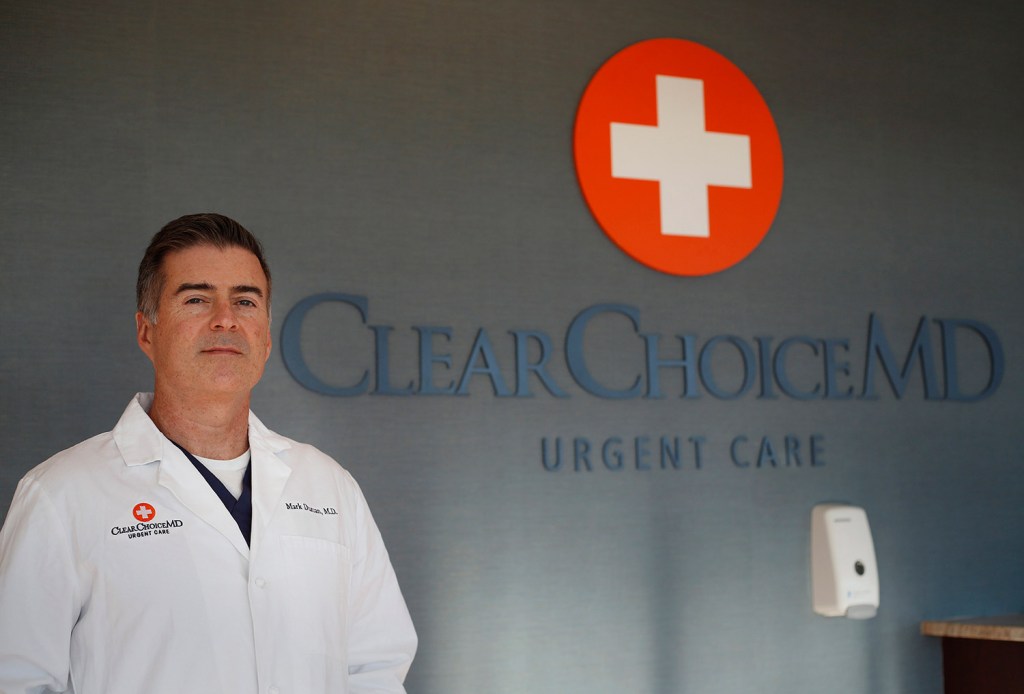When ClearChoiceMD Urgent Care opened its doors last week in Scarborough, it became the latest entrant in the expanding walk-in clinic market in Maine.
Maine – like much of the country – is undergoing a boom in new urgent care centers, with several starting up in the past few years, including in Yarmouth, Portland, Brunswick and Saco. Mercy Express Care opened its Fore River location last spring in Portland, the fifth Mercy-affiliated center.
Maine has at least 23 urgent care centers, according to the Maine Department of Health and Human Services website, including ClearChoiceMD.
Nationwide, the $15 billion industry has grown 8 percent per year from 2009 to 2014, with 6 percent annual growth expected over the next five years, according to Strategic Growth Advisors, an Arizona company that does consulting for the health care industry.
“These urgent care centers have been very profitable,” said Mitchell Stein, a Cumberland-based health policy expert. “They are quick and less costly for patients.” Experts differ on the number of urgent care centers nationwide, with counts ranging from 5,000 to 9,000.
Health care experts say a number of factors are spurring the increase, including more people with insurance, more insured people paying higher deductibles, and a dawning realization that, in many cases, patients can go to urgent care centers instead of the emergency room. The urgent care centers are designed for people with common ailments that demand attention, such as infections, fractures and lacerations.
On Friday, ClearChoice doctors, nurses and health workers were little more than caretakers of an empty building, waiting for customers at the Payne Road location. They said they hoped the center would build its clientele to about 30 patients per day once people realized they were open.
“If you came in here with a broken bone, we would put a splint on it, take X-rays, prescribe painkillers and refer you to an orthopedic surgeon, same as if you went to the ER,” said ClearChoice Dr. Mark Durcan. “But if someone came in here with chest pains, we’re sending them to the ER.”
Dr. Marcus Hampers, owner of New Hampshire-based ClearChoiceMD, said the company conducted a market analysis and determined that Maine and parts of northern New England needed more urgent care centers. The Maine location will be the ninth urgent care center opened by ClearChoice – a new company – since June.
“Emergency departments are often overwhelmed by people who don’t really need to be in the emergency room,” Hampers said. “Forty to 50 percent of the people can be safely treated in an urgent care center. And we can get you in and out in an hour.”
The Scarborough center accepts insurance and self-pay patients, with visits costing $100 to $250, depending on what needs to be done.
Hampers said that although the Portland area has several walk-in clinics, most are tied to a hospital, which he does not see as direct competition to his centers, because he said hospital-affiliated urgent care is more expensive than independent centers. Fourteen of the 23 urgent care centers listed on the Maine DHHS website are affiliated with a hospital.
“We do not see them as a threat to us,” Hampers said.
But Lisa Letourneau, executive director of Maine Quality Counts, a nonprofit health-care advocacy group, said ClearChoice’s prices are comparable to most urgent care centers, even ones that are hospital-based. However, Letourneau said it is true that the hospital urgent care centers would likely be somewhat more expensive because they have costs that the independent centers do not, such as being required to accept patients without insurance who can’t pay.
Letourneau also said that all walk-in clinics have a much quicker turnaround for patients than emergency departments, also making them an attractive option.
“Our society wants immediate care and easy access, and these clinics meet that criteria,” she said.
Letourneau said she sees two driving forces behind the urgent care center movement – more people having insurance, and the long-term trend of deductibles being higher. For many years, companies have been reducing their health care costs in part by requiring employees to contribute more toward their insurance, which often means deductibles are higher, she said.
With a higher deductible, patients are more likely to notice how much each health-related visit costs and may look for less expensive options, such as urgent care centers rather than emergency rooms.
Also, with the Affordable Care Act reducing the ranks of the uninsured, there are more people who seek care when sick, Letourneau said.
She said a 28-year-old woman suffering pain from an infection may have shied away from going to an urgent care center when she was uninsured. But with ACA coverage she’s more likely to visit a walk-in clinic for treatment, Letourneau said.
Stein, the health policy expert, said another factor is that the ACA discourages unnecessary emergency room visits, so more health insurance plans now require higher co-pays for such visits.
“If you get a big co-pay bill from going to the ER, that’s going to make you think twice,” Stein said.
Letourneau said that in other states, she’s seen chain drugstores open walk-in clinics, which are convenient, but also make her uncomfortable if the reason for their existence is based more on retail sales than on health.
“It’s another way to get people in the door to their store, so consumers need to be a bit wary,” she said.
Joe Lawlor can be contacted at 791-6376 or at:
jlawlor@pressherald.com
Twitter: @joelawlorph
Send questions/comments to the editors.





Comments are no longer available on this story